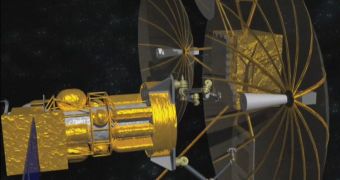One possible method of fighting against debris clogging up Earth's low orbit would be to cannibalize defunct satellites for components that are still active, valuable, and operational. These parts could then be assembled into new spacecraft, a new proposal says.
The US Department of Defense's (DOD) Defense Advanced Research Projects Agency (DARPA) has already proposed an interesting project, which it calls Phoenix. Its goal is to send spacecraft to orbit that would cannibalize dead satellites, returning expensive components back to Earth for reuse.
This would enable space agencies to build cheaper satellites, while at the same time contributing to keeping our planet's orbits clean. Naturally, this approach is not sufficient to clean up all space debris around Earth, but it could be used in conjunction with other, dedicated methods.
DARPA experts say that Phoenix will be a robot mechanic. The vehicle will be launched on a rocket just like a standard satellite, but it would then travel to geosynchronous orbit, around 35,406 kilometers (22,000 miles) above the surface of the planet.
This is where most communications and positioning satellites are deployed. When these spacecraft are taken out of active duty, this is usually done because their cameras have suffered damages, or their batteries and cooling fluids are exhausted.
But their antennas remain operational, and these components could represent a potential resource for Phoenix to exploit. “If this program is successful, space debris becomes space resource,” a statement from DARPA director Regina Dugan reads.
One possible way to augment Phoenix's functions would be to launch small satellites or nanosatellites from Earth alongside the robot mechanic. These spacecraft would carry no antennas of their own, but they would travel to GTO alongside Phoenix.
Upon reaching their destination, the DARPA vehicle would take antennas off dead satellites, and outfit them on the new arrivals. The latter could then be transferred to a relevant orbit, and begin their science mission. This approach would help save a lot of money for various agencies and departments.
One of the main problems with high-performance satellites is that they are very large, requiring huge amounts of fuel and a lot of money to launch. The cost offset associated with using Phoenix would shortly exceed billions of dollars, Space reports.
“Satellites in GEO are not designed to be disassembled or repaired, so it's not a matter of simply removing some nuts and bolts,” DARPA Phoenix program manager David Barnhart explains.
“This requires new remote imaging and robotics technology and special tools to grip, cut, and modify complex systems, since existing joints are usually molded or welded,” the expert concludes.

 14 DAY TRIAL //
14 DAY TRIAL //